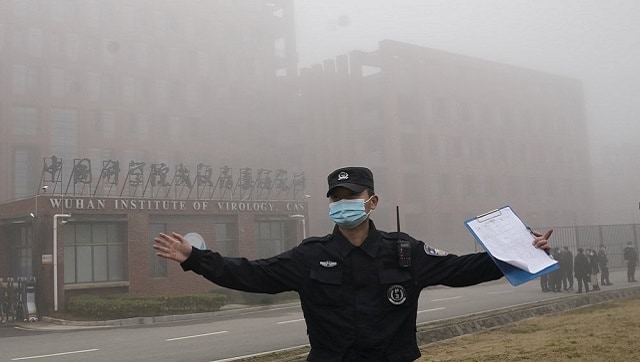Analysis: Idaho awash in enough cash to address a lot of issues — or start a lot of fights
Maybe the 2022 Legislature will decide to pay for full-day kindergarten.

Kevin Richert
Fri, June 18, 2021
This story originally published June 17 at IdahoEdNews.org.
Maybe the 2022 Legislature will decide to pay for full-day kindergarten.
Or maybe not.
But if lawmakers say no, money won’t be an excuse.
Idaho’s ever-growing budget surplus is trending toward a record-shattering and mind-boggling $800 million. The big reason: Individual income tax collections are ahead of forecasts by a whopping $452.2 million. We’ll know the exact surplus sometime after June 30, when the state closes the books on the 2020-21 budget year.
Regardless, the state is awash in enough cash to address a lot of issues — or start a lot of fights.
Which is where all-day kindergarten enters the picture.
Most school districts and charter schools already offer a full day of kindergarten, but that means they have to come up with a way to pay for it. The state only covers the costs of half-day kindergarten.
The idea of state-funded full-day kindergarten is not a new one. In 2019, Gov. Brad Little’s education task force recommended funding full-day kindergarten. The Idaho School Boards Association has supported the idea for several years. In March, Republican Sen. Carl Crabtree of Grangeville and Rep. Judy Boyle of Midvale unveiled a full-day kindergarten bill.
And on Wednesday, the State Board of Education endorsed full-day kindergarten. If Little goes along with the unanimous recommendation from his State Board, the issue will come up again at the board’s August meeting.
Little is talking in general terms about what he wants to do with the surplus. In a news release last week, he pledged to “advocate for even more tax relief and strategic investments in key areas, with education topping the priority list.” Little’s staff didn’t respond to a request for details.
However, it would be shocking if Little didn’t join the push for full-day kindergarten.
Early reading has been Little’s top education priority — and maybe even his highest policy priority, period. Full-day kindergarten fits right in with Little’s goal of getting children reading by third grade.
There’s plenty of money to pay for full-day kindergarten — the Crabtree-Boyle bill pegged the cost at a maximum of $42.1 million per year. And while supporters will argue for the benefits of full-day kindergarten, and talk about building pre-reading skills and social skills, they can also make a bottom-line case. They can say state funding would provide stability, allowing districts to move the kindergarten costs off of one- or two-year supplemental property tax levies. They can also argue for equity, since state funding would get schools out of the business of charging for full-day kindergarten.
“Having to charge tuition creates access barriers,” said Quinn Perry, the ISBA’s policy and government affairs director.
Of course, there would be pushback from critics, and from one of the Statehouse’s usual suspects.
Reliably enough, the Idaho Freedom Foundation ripped full-day kindergarten earlier this week, saying the idea would yield negligible benefits that would disappear by third grade, while limiting parental choice.
“Idaho’s kids need a proven reform like school choice instead of proven failures like full-day kindergarten,” the foundation’s Anna Miller wrote Tuesday.
Sounds like another debate pitting the foundation against, more or less, every education stakeholder group in the state. Why should the 2022 legislative session be any different than 2021?
But a big surplus is kind of like a budgetary Rorschach test. Anybody can look at it and see the solution to a longstanding problem.
Rod Gramer hasn’t had time to poll his Idaho Business for Education members about the surplus. But he believes the statewide group of business leaders would support full-day kindergarten and a big push for early education. The Legislature rejected a $6 million-a-year federal early education grant this year, largely at the Freedom Foundation’s urging, but Gramer hopes 2022 would be a historic year for pre-K and kindergarten alike. “In my book, they’re the most important things we can do to improve student outcomes in Idaho.”
In addition to all-day kindergarten, the ISBA would like to see some surplus dollars go into school classified staff salaries. School districts are facing their own version of the labor shortage, when classroom paraprofessionals, bus drivers and cafeteria staff can make more money elsewhere in the labor market. “We’re losing employees too, and it’s not just educators,” Perry said.
While noting the momentum behind full-day kindergarten, state superintendent Sherri Ybarra says she’d like to see the state restore several budget line items — for classroom technology, teacher training, IT staffing and content and curriculum. She also wants help for distracts and charters, which are backfilling staffing at a cost of more than $200 million a year, putting pressure on local property taxes.
Wendy Horman, an Idaho Falls Republican who sits on the budget-writing Joint Finance-Appropriations Committee, clicked off several ideas for surplus dollars. The state could fund grants and scholarships for public and private school students, an idea she pushed unsuccessfully in 2021. The state could finally shift to an enrollment-based funding formula, providing money to districts that would otherwise lose money during the transition. Or lawmakers could upgrade the State Department of Education’s data management system. “It’s not very splashy, but I think it’s essential to (classroom) improvement to have accurate, real-time data.”
A surplus of money has a way of generating a surplus of ideas. So a robust budget year often has a way of translating into a rough legislative session. “Sometimes it’s harder when you have money than when you don’t have money,” Gramer said.
The Legislature is just coming off a record-setting 122-day slog of a session. A record-setting budget surplus — which just happens to coincide with an election year — could make for another long winter (and spring) around the Statehouse.











